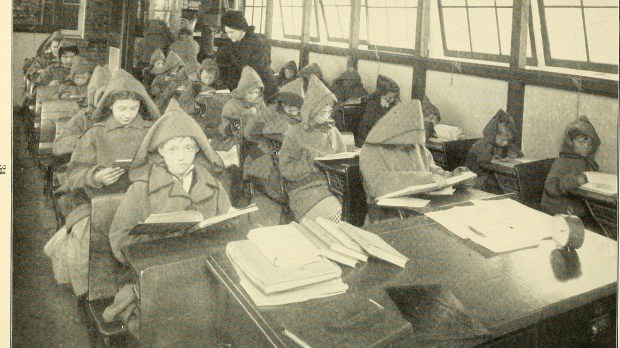Lenten Campaign 2025
This content is free of charge, as are all our articles.
Support us with a donation that is tax-deductible and enable us to continue to reach millions of readers.
As the summer progresses into August and public officials debate the wisdom of reopening schools in the fall, a page from the history books suggests a possible solution to safely welcoming students back to class in the midst of the continuing COVID-19 pandemic.
It turns out, this is not the first time officials struggled with providing public education during a public health crisis. While COVID-19 is the threat today, over a century ago, it was tuberculosis that threatened lives in American cities.
In 1907, two Rhode Island doctors proposed open-air schools for students who had tuberculosis or who had been exposed to it. They based their proposals on education trends in Germany at the time.
By early 1908, the floor of an empty brick building in Providence was converted into a space with ceiling-height windows on every side, kept open at nearly all times, according to the New York Times. Kids would stay warm through the winter by learning in “sitting bags” or by gathering around a pot belly-type stove. Teachers served up hot soup or cocoa along with spelling and civics lessons.
The experiment had great results, improving the health of a number of children.
A similar approach was undertaken by Dr. Edward Livingston Trudeau at his Adirondack Cottage Sanitorium in upstate New York. Decades before the development of antibiotics, the idea was that tuberculosis could be cured, or at least managed, by exposure to cold, clear mountain air.
“Within two years there were 65 open-air schools around the country either set up along the lines of the Providence model or simply held outside,” the Times wrote. “In New York, the private school Horace Mann conducted classes on the roof; another school in the city took shape on an abandoned ferry.”
As officials worry about the novel coronavirus’s possible effects on those sitting at school desks and those standing at blackboards, open-air classes might well be a possible alternative. “One of the few things we know about the coronavirus with any degree of certainty is that the risk of contracting it diminishes outside — a review of 7,000 cases in China recorded only one instance of fresh-air transmission,” says the Times.
If it can be worked out — and there are lots of logistics to consider — it might just be a good way to avoid resorting to Zoom.

